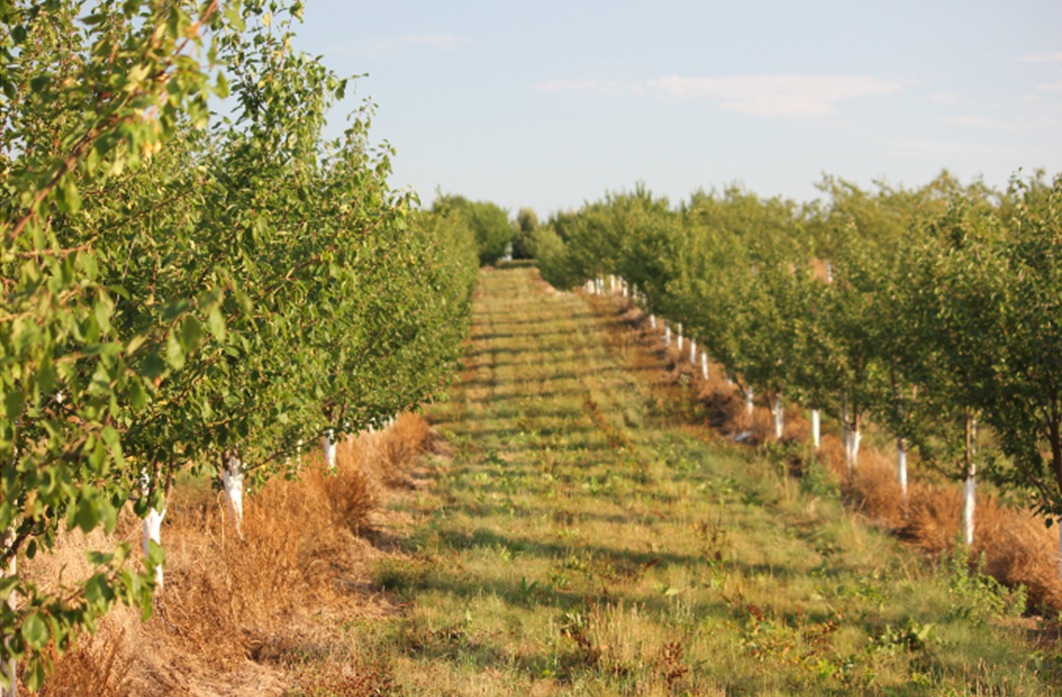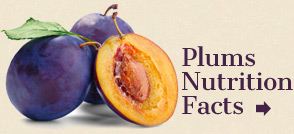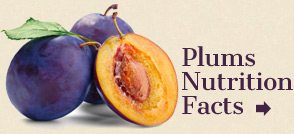Establishing and Training Plum Trees
Summary by Bill Shane, Michigan State University Extension
 The plum tree is relatively susceptible to damage by cold temperatures. Temperatures of -13°F or lower will generally destroy flower buds and temperatures lower than about -17°F will cause damage to limbs, trunks, and leaf buds. Certain varieties, especially Japanese types tend to be more tender than European and American type varieties. Trees can also be damaged by rapid temperature drops following a period of mild weather in early fall or early spring.
The plum tree is relatively susceptible to damage by cold temperatures. Temperatures of -13°F or lower will generally destroy flower buds and temperatures lower than about -17°F will cause damage to limbs, trunks, and leaf buds. Certain varieties, especially Japanese types tend to be more tender than European and American type varieties. Trees can also be damaged by rapid temperature drops following a period of mild weather in early fall or early spring.
Plum trees in sites on higher elevation usually have fewer problems due to cold compared to low areas where cold air tends to settle.
Purchasing Trees
Purchase trees from a reputable dealer or nursery. Dormant medium-sized trees (1/3 – 3/4 inches in diameter) usually perform best. Most plum varieties are self-unfruitful, meaning that a companion plum variety with compatible pollen is needed to get good fruit production. Trees for the Michigan climate should have one of the following rootstocks: myrobalan seedling or myrobalan clonal rootstock. Peach and American plum rootstocks are not recommended.
Soil and Site
Plum trees prefer sandy loam to loamy soils and will do reasonably well in other soils provided they are well drained. Planting plum trees on mounds or ridges (5’ or more wide, approximately 6” high after soil settling) helps if the soil is heavier or is generally wetter than optimum. Ideally, plum trees need full sunlight all day. The ideal soil pH is 6.5 to 7.0 and should be adjusted based on soil tests before planting. Plant fruit trees in early spring as soon as the trees arrive and the soil is dry enough to work (late March through April in Michigan). The roots should not be allowed to dry out. Do not put the trees in coolers or other places where apple and other ethylene generating fruit are stored. If necessary, trees can be temporarily planted in a cool, shady spot for a few days before transplanting in the permanent site, if the trees were received as bare root trees. Soaking the roots of bare root trees in water overnight before planting can help to rehydrate the tree. Try to get the trees in their permanent site promptly.
Plant fruit trees in early spring as soon as the trees arrive and the soil is dry enough to work (late March through April in Michigan). The roots should not be allowed to dry out. Do not put the trees in coolers or other places where apple and other ethylene generating fruit are stored. If necessary, trees can be temporarily planted in a cool, shady spot for a few days before transplanting in the permanent site, if the trees were received as bare root trees. Soaking the roots of bare root trees in water overnight before planting can help to rehydrate the tree. Try to get the trees in their permanent site promptly.
Planting the Tree
1) Trim off any excessively long root tips or tips that are half-broken off. Remove tags and wires.
2) Spend the time to dig a hole wide and deep enough to allow the roots to be spread out completely. Do not wind the roots to fit in the hole.
3) Refill the hole, tamping the soil gently as you go to help avoid air holes. Keep sod out of the hole.
4) Firmly pack the soil around the roots but do not strip roots off by excessive stamping. Watering after planting helps to settle the soil around the roots. The soil around the base of the tree should be slightly higher than the surrounding area so that excess water does not collect there following rains.
5) Trees can be fertilized after rain has thoroughly settled the soil around the roots, about 3 weeks after planting. Four tablespoons of a 33% nitrogen fertilizer is sufficient for fertilizing a newly planted tree in an average fertility soil. Spread it lightly in a wide diffuse band 16 to 20 inches from the tree trunk. Soils high in natural fertility may not need fertilizer in the first year.
Pruning
Plum trees are pruned and trained each year to develop and maintain tree size and shape. Japanese varieties are generally trained into an open-center system with 4 to 6 major (scaffold) limbs forming a vase shape. European plum varieties tend to be more upright, with a dominant central leader, and are suited for a tree that eventually has a single main axis 4 to 6 feet long with and 8 to 12 scaffold limbs.
Pruning at Planting (1st leaf)
All limbs less than 2 feet from the ground should be removed. Many plum trees from the nursery have no suitable side limbs (feathers) and should be reduced to a single whip with no side limbs.
For open center trees (Japanese plum varieties) head the central stem (leader) to a height of 30 to 45 inches from the ground at planting. Limbs arising from the central leader are scaffold limbs and should be spaced around the trunk, both around and up the trunk. Remove any upright scaffold limbs (more than 60 degrees from the horizontal. Save no more than 4 scaffolds if the tree was headed at the lower height, no more than 6 if the tree was headed high at planting. Shorten scaffold limbs by 1/3. If there are not at least 2 good limbs, shorten all scaffold limbs to ½ to 2 inches in length.
For central leader trees (European plum varieties) head the central stem (leader) to approximately 4 feet from the ground. Remove any upright scaffold limbs (more than 60 degrees from the horizontal. If there are not at least 2 good limbs, shorten scaffold limbs to ½ to 2 inches in length. Save no more than 6 scaffold limbs. Shorten scaffold limbs by 1/3.
For both open center and central leader trees, as scaffold limbs start to grow, single the end of each developing scaffold limb to a single bud, choosing, if possible, buds that continue the desired angle of the branch. Remove any shoots on the trunk within 2 feet of the ground.
Pruning Young, Non-Bearing Trees
In spring the year after planting (2nd leaf), well developed wide-angled scaffold limbs spaced evenly around the main trunk and cut off all other limbs nearly flush (leave a 1/3 inch stub) with the trunk.
From the second to the fourth years, remove any branches that grow straight up or straight down. Prune lightly to eliminate overlapping and damaged limbs.
Pruning Bearing Trees
Plum bear fruit on short spurs on 2 year or older areas of limbs.
Maintain tree height at 9 to 10 feet by heading back scaffold branches to an outward growing lateral. Remove weak and diseased branches and excessive branches. Trees with excessive growth have poorly colored fruit and leaves in the inside of the canopy due to poor sunlight penetration.
Fertilizing
Manage plum trees to ensure production of 10 to 18 inches of new growth each season. This is accomplished through pruning and fertilization as needed. Fertilizer should be applied in the spring shortly before growth starts. The most important nutrients for most Michigan soils are the nitrogen and potassium—the first and third number on a fertilizer bag. A fertilizer with the formulation 10-10-10 contains 10% by weight of nitrogen. A typical application per year to a young tree is 1/10 lb of actual nitrogen which translates to 1 lb of 10-10-10 fertilizer. Adjust rates according to tree vigor. Phosphorus (the middle number) is generally not needed in Michigan soils.
Plum Thinning
Some plum varieties should be thinned in years when they bear a heavy crop to avoid limb breakage and to attain good fruit size and quality. Hand-thin plums in mid to late June after natural June drop has occurred.
PollinationMost plum varieties require cross-pollination. The compatible varieties must be planted within 100 of each other and generally bloom at the same time.Most European plum varieties require cross-pollination from another European plum tree variety. A few European plum varieties such as Damson, Italian Prune, Valor, and Stanley are at least partially self-fertile but will generally yield better with cross-pollination. Japanese plum varieties need cross-pollination from another Japanese or Japanese-American hybrid variety. Methley and Santa Rosa are self-fertile.





